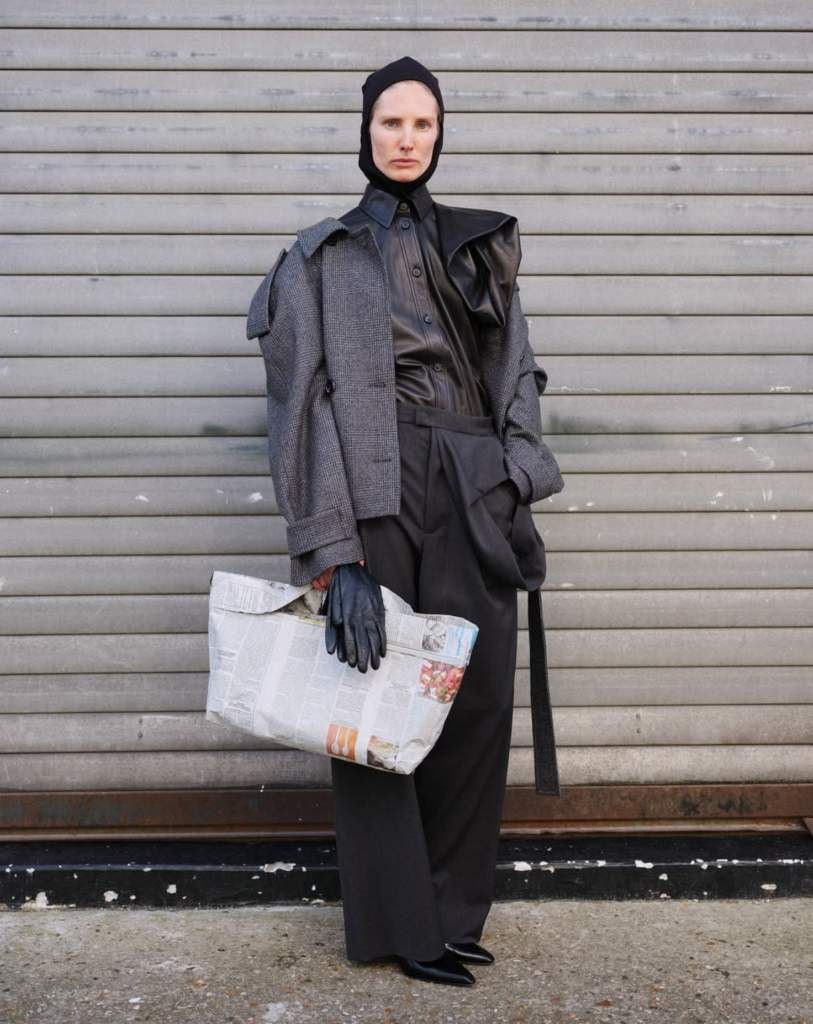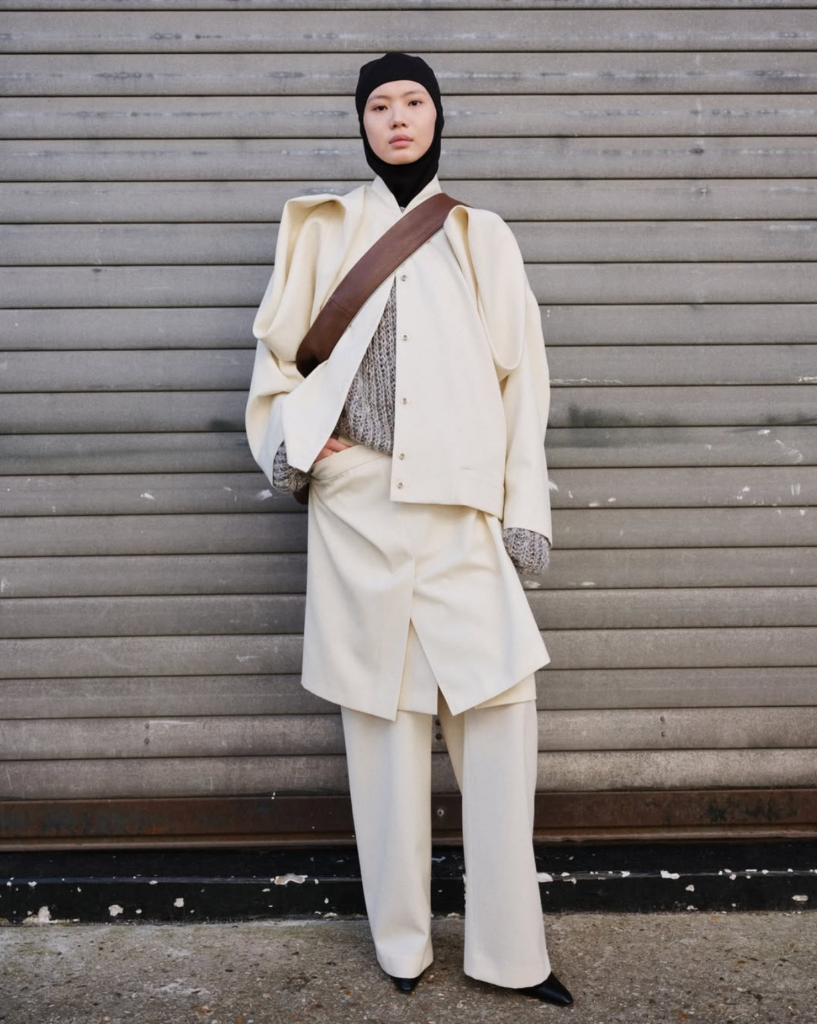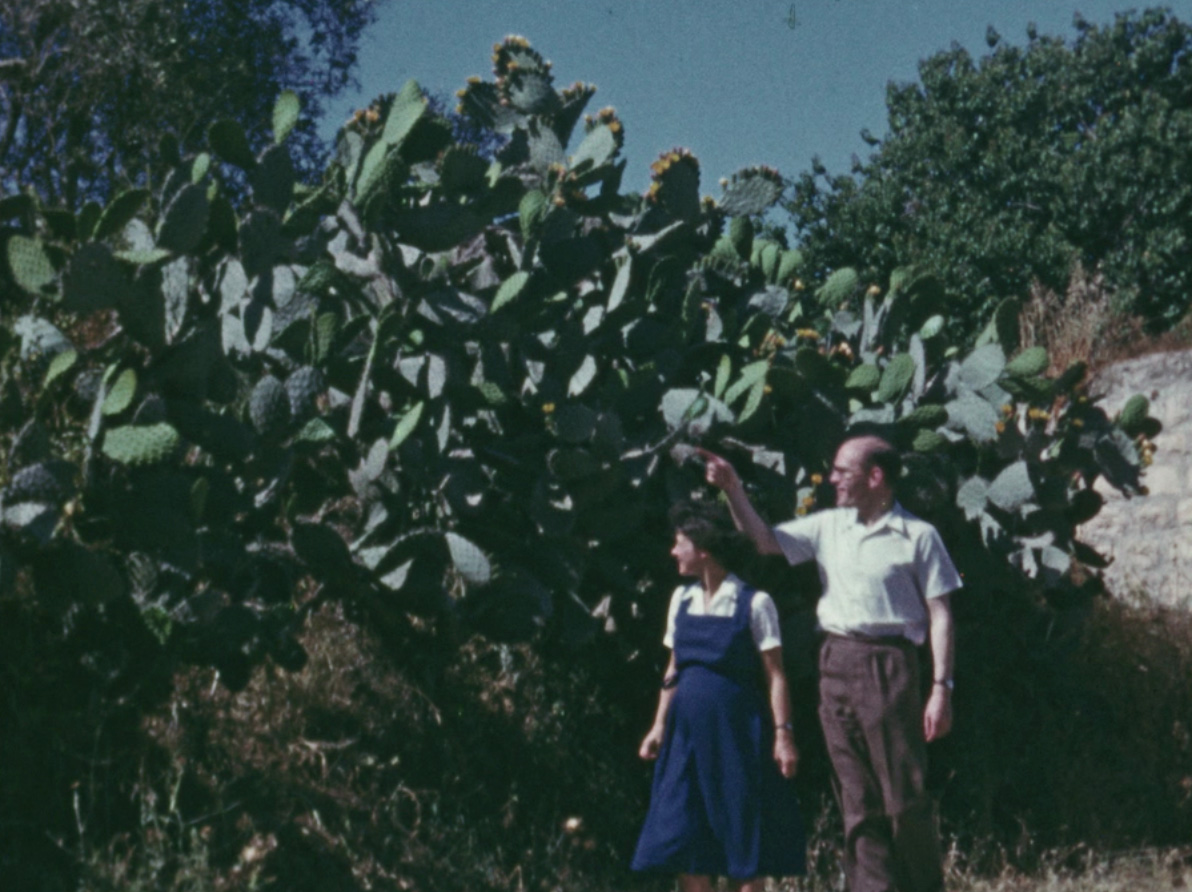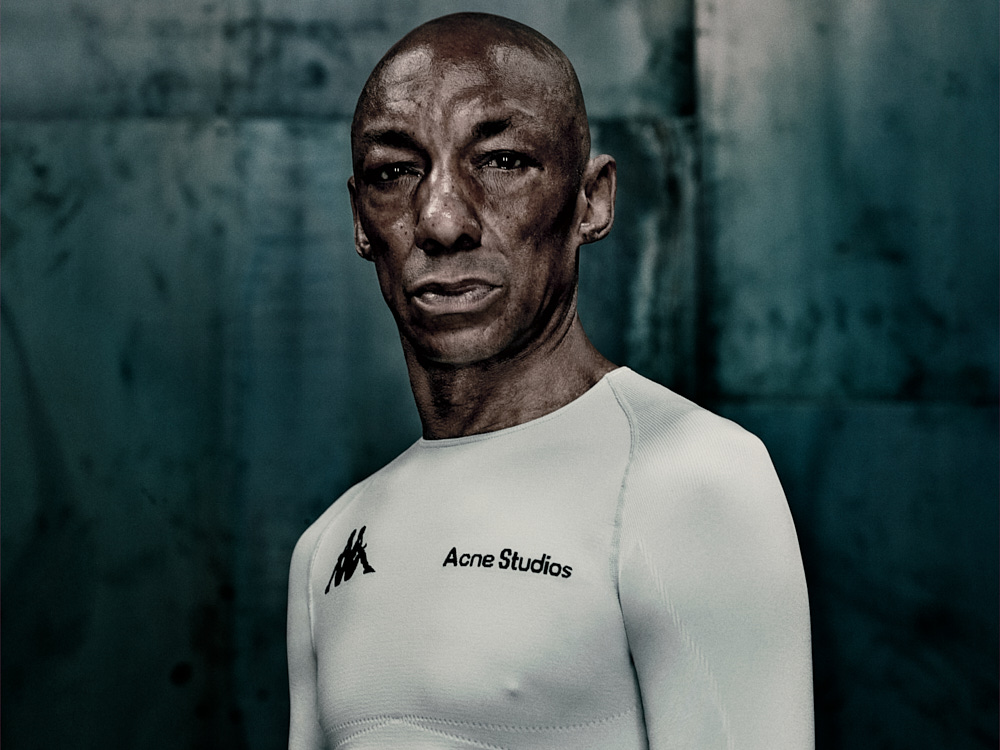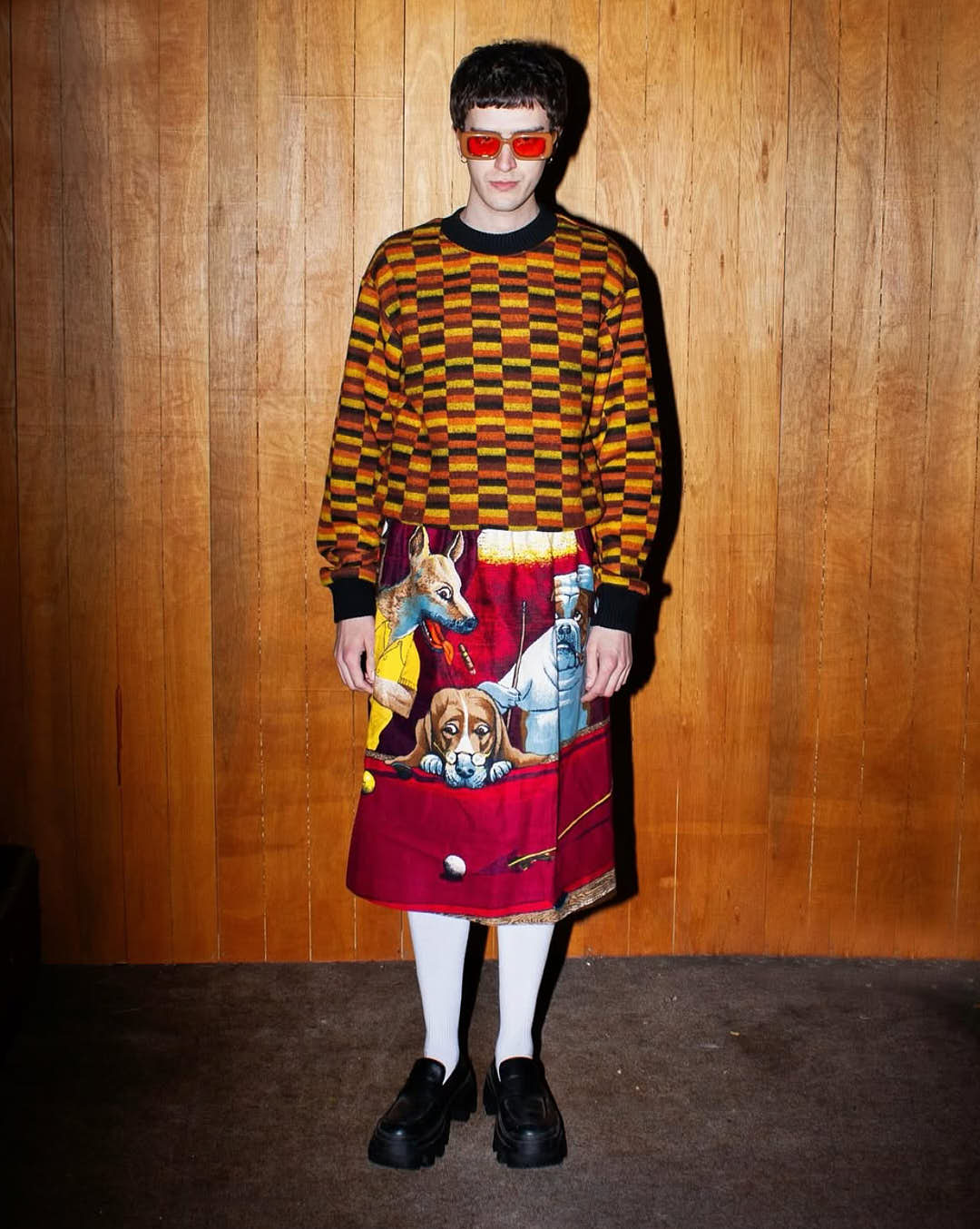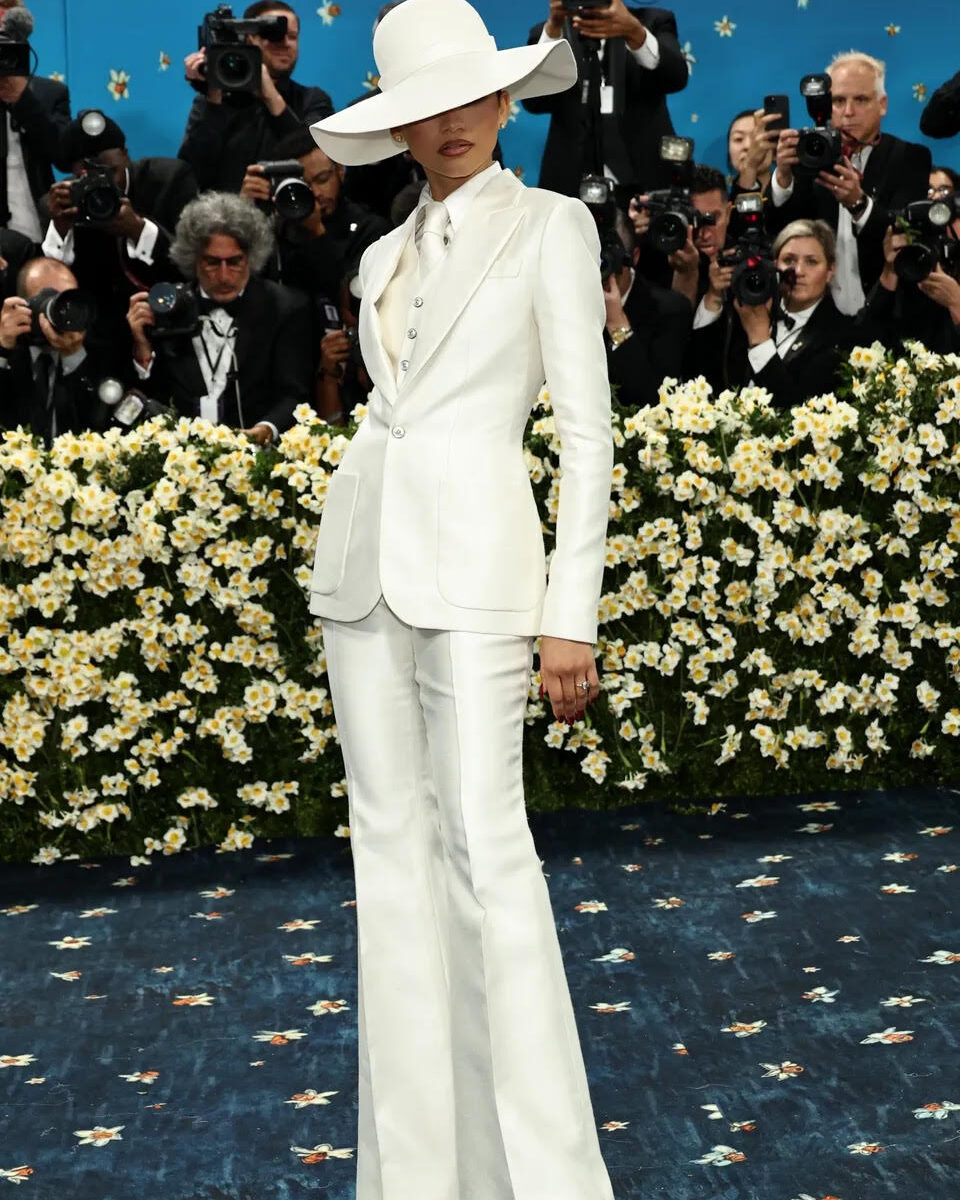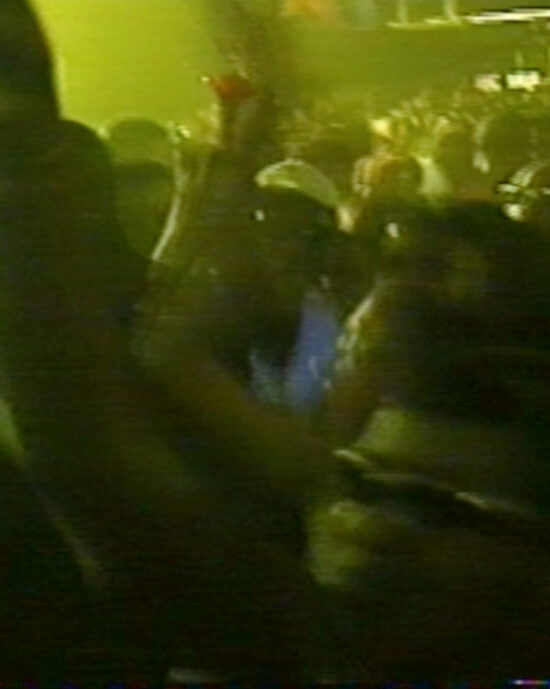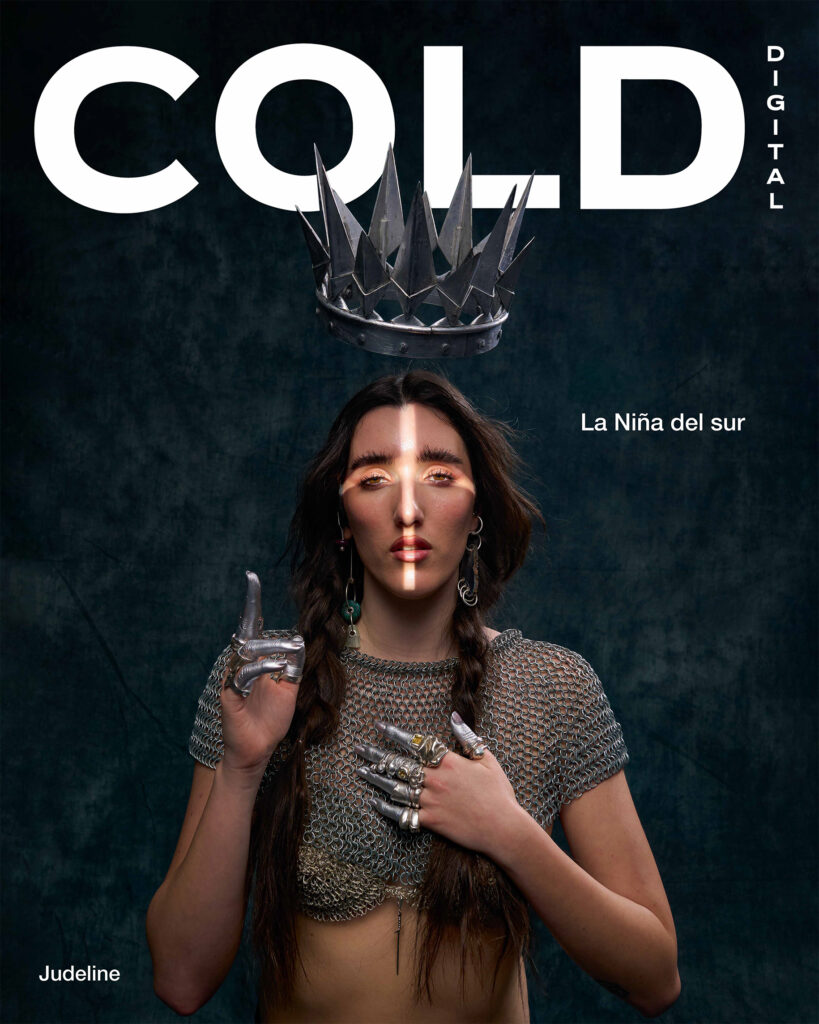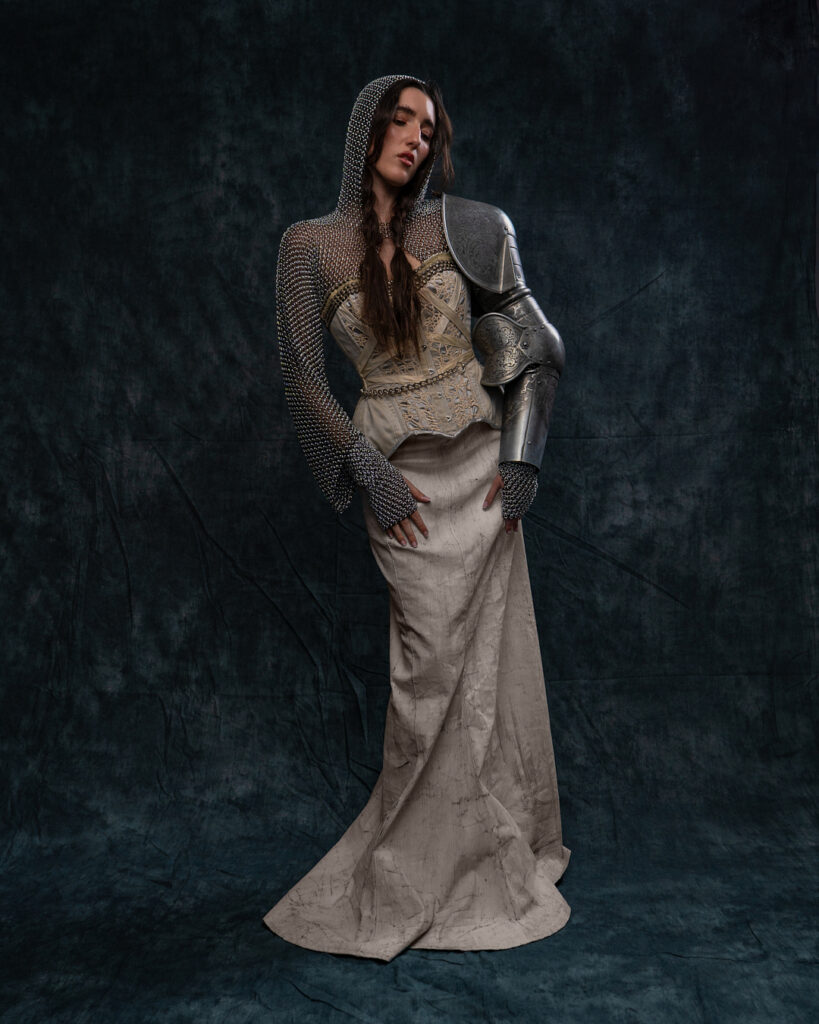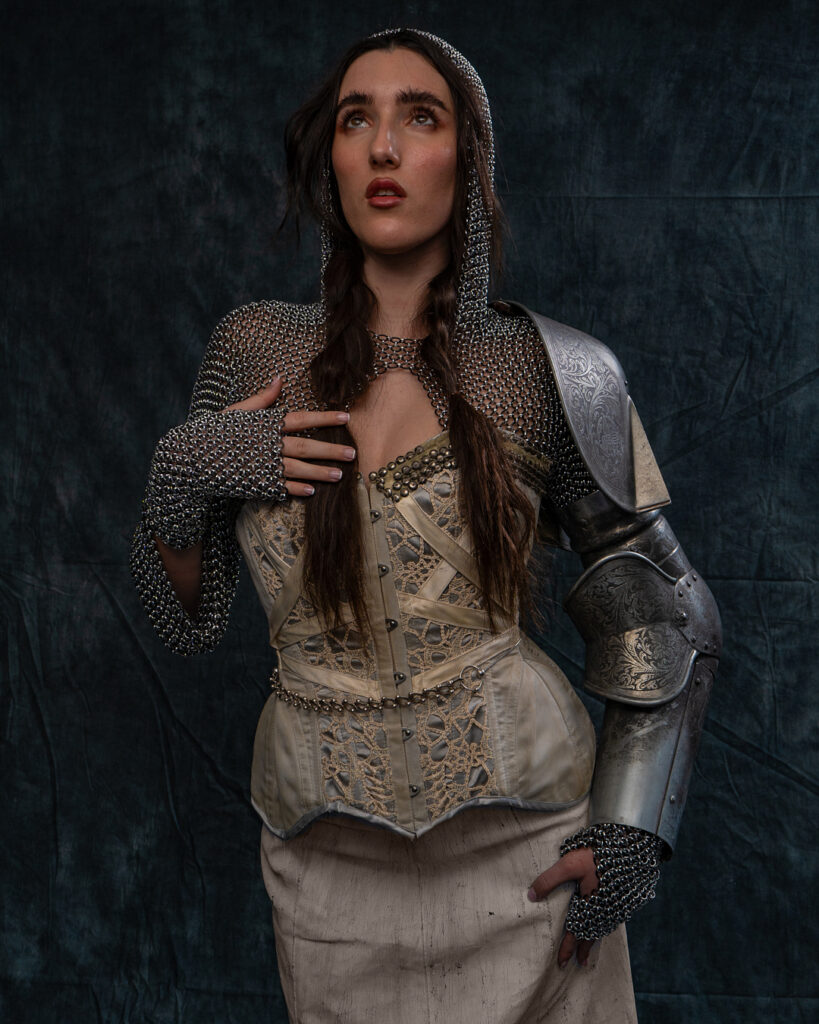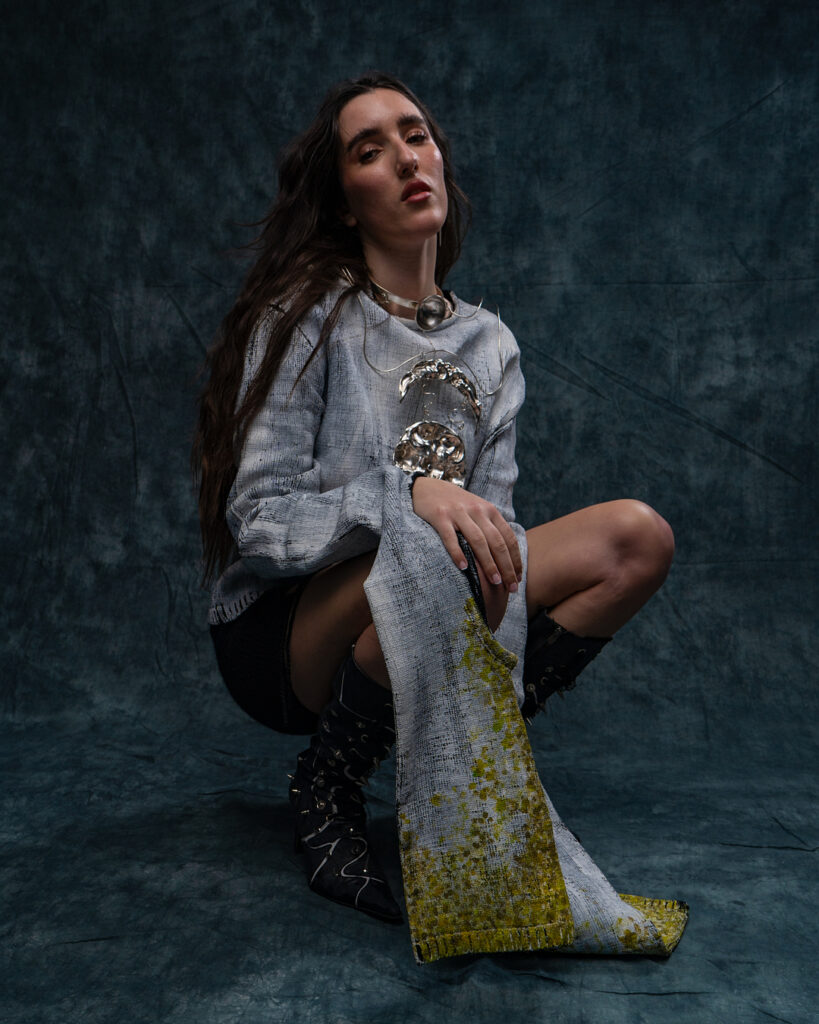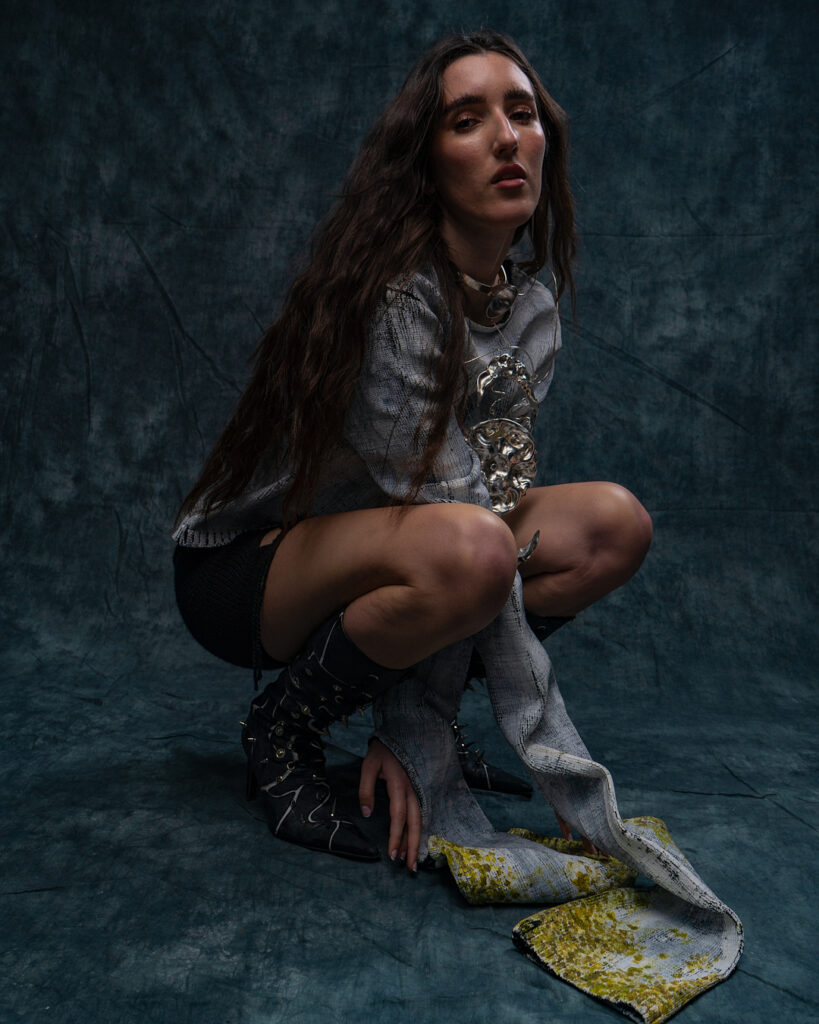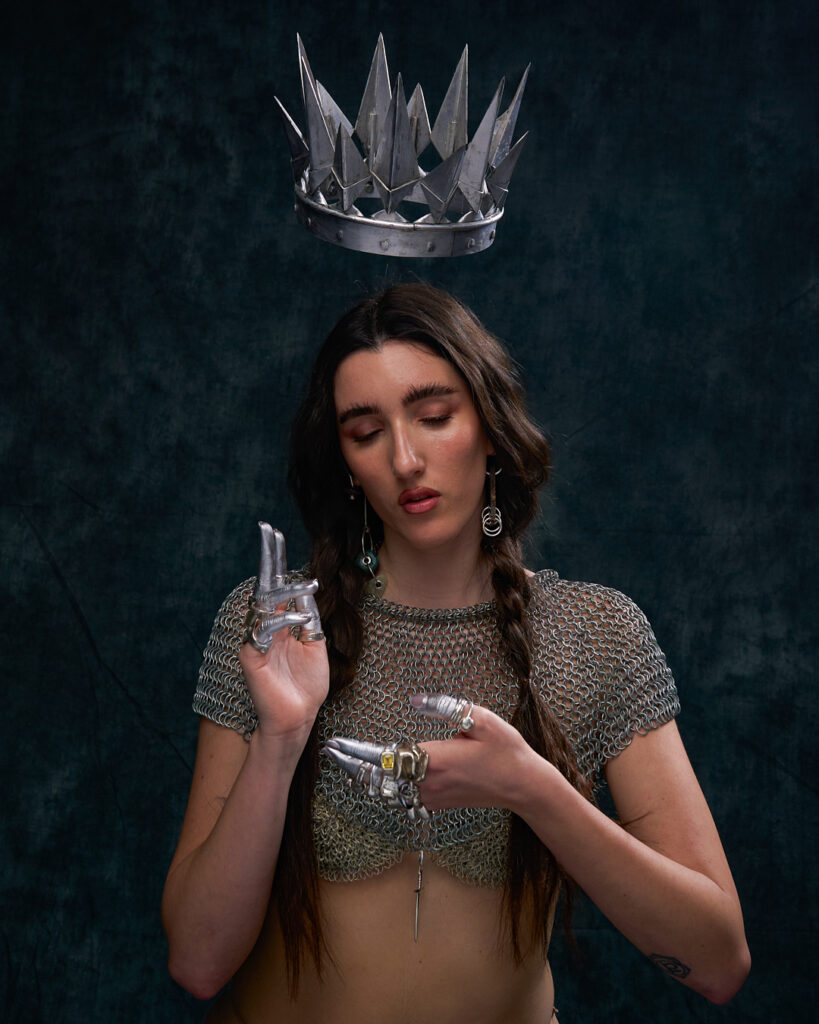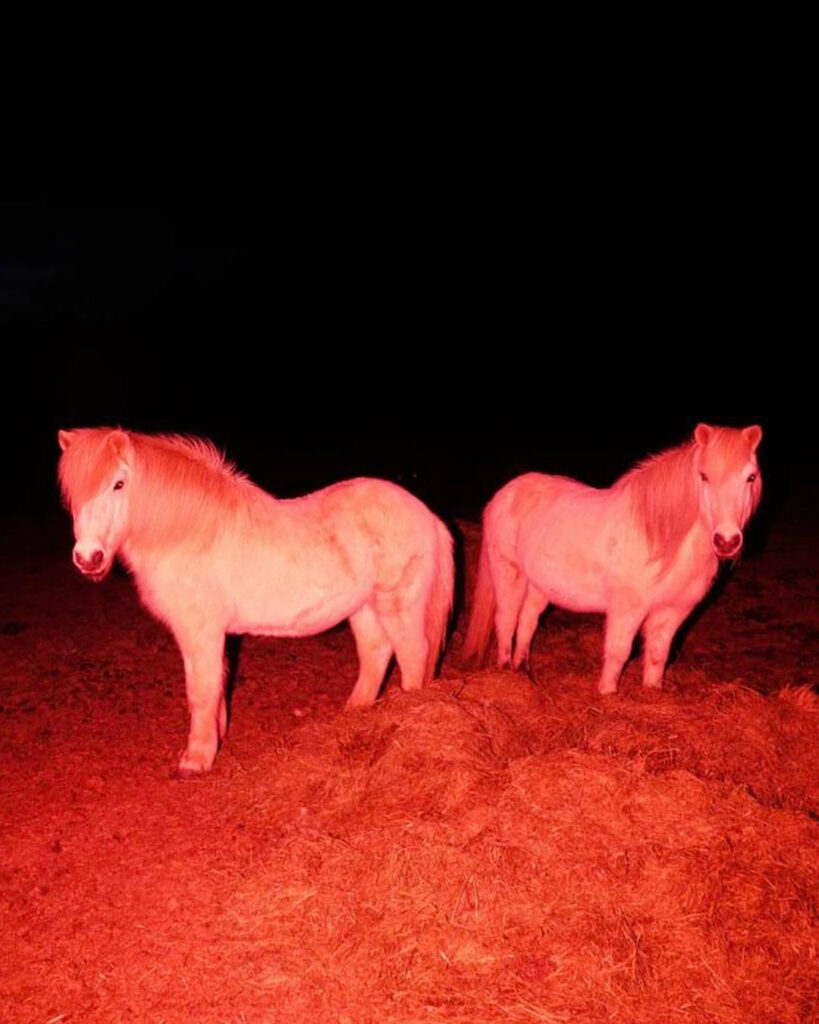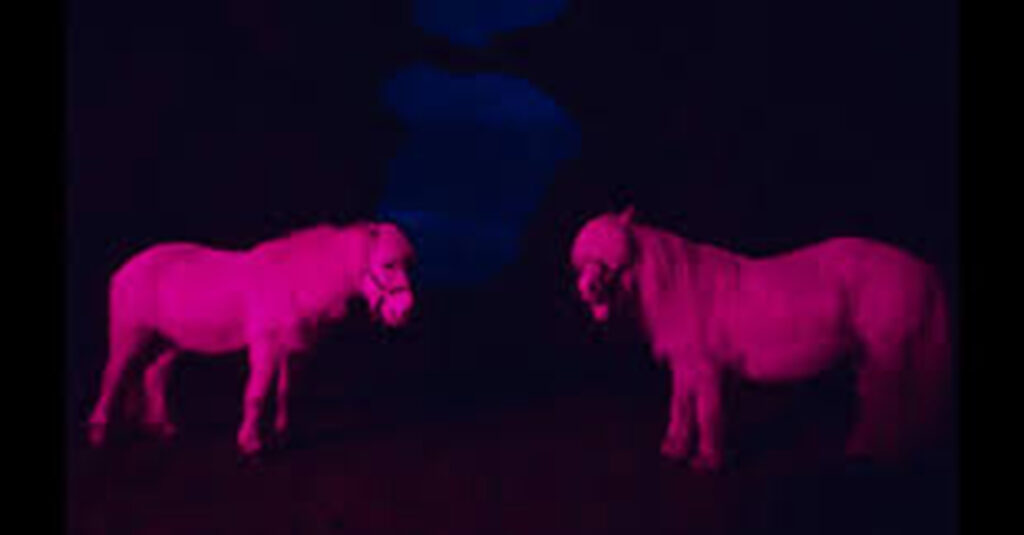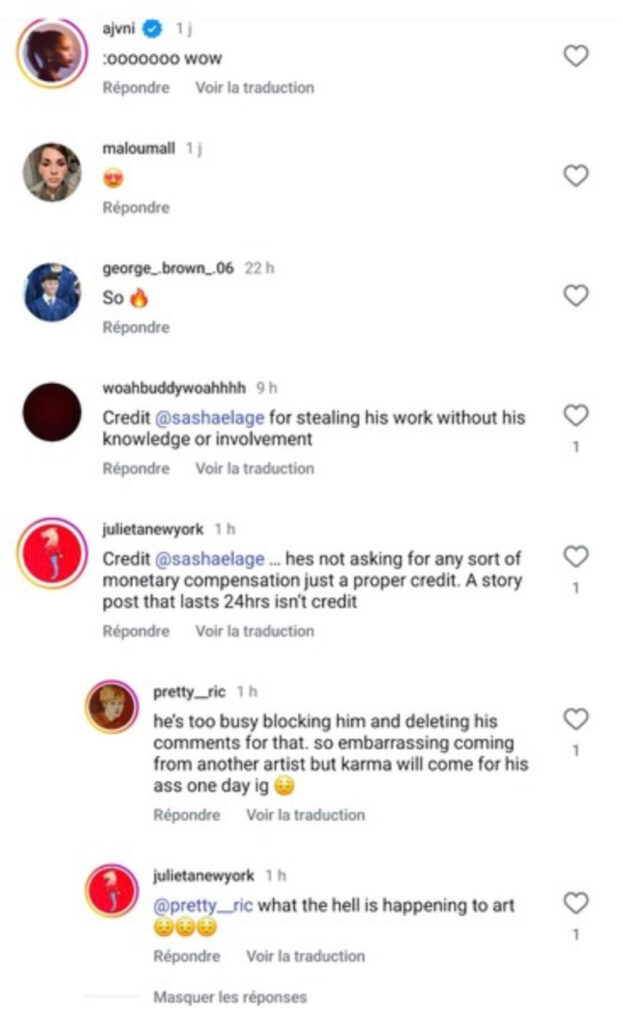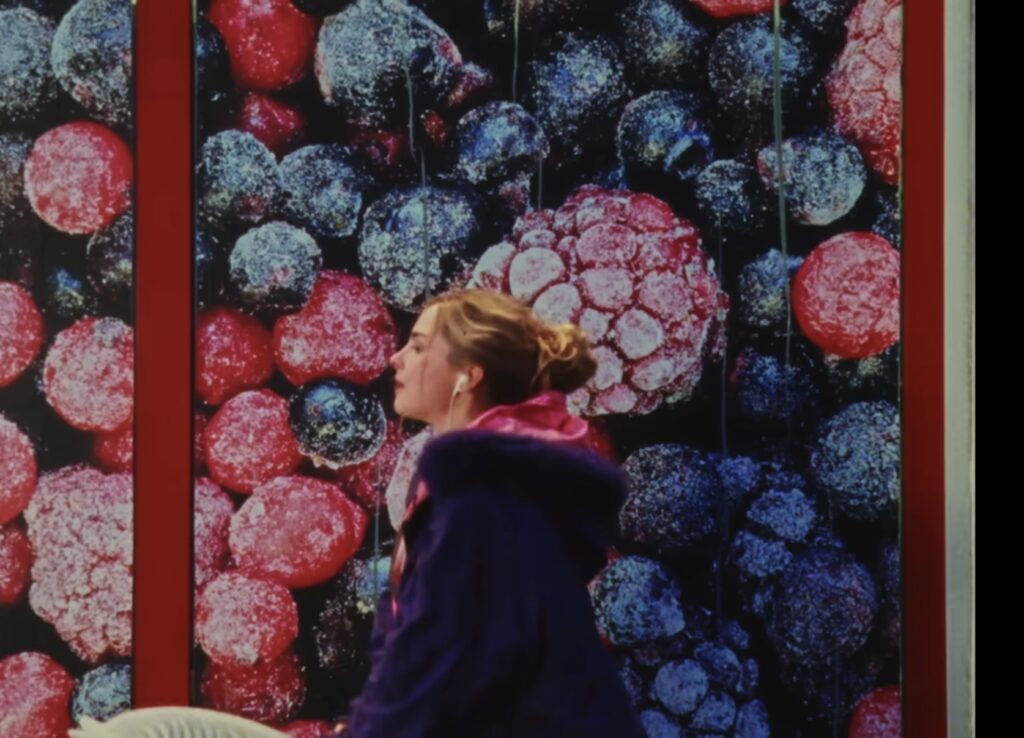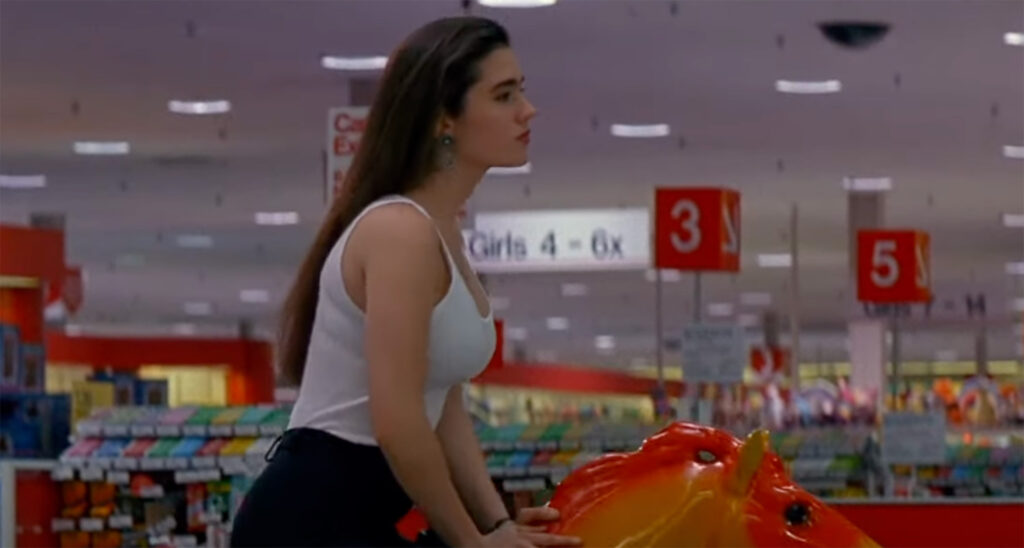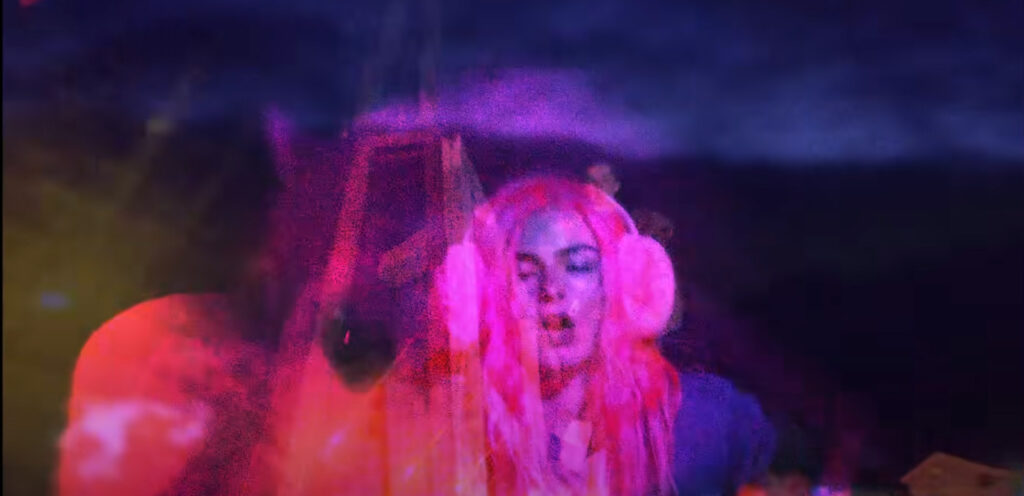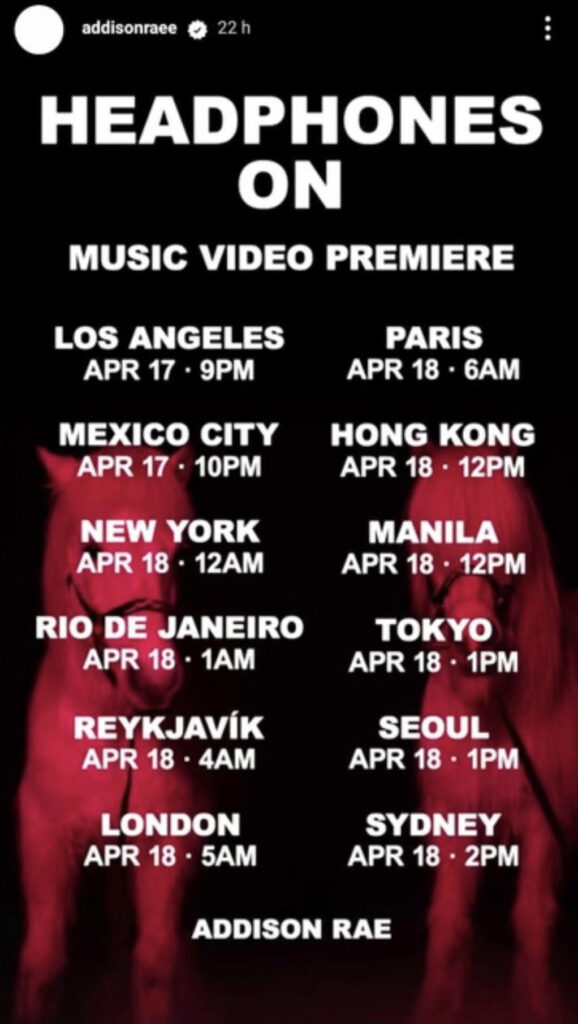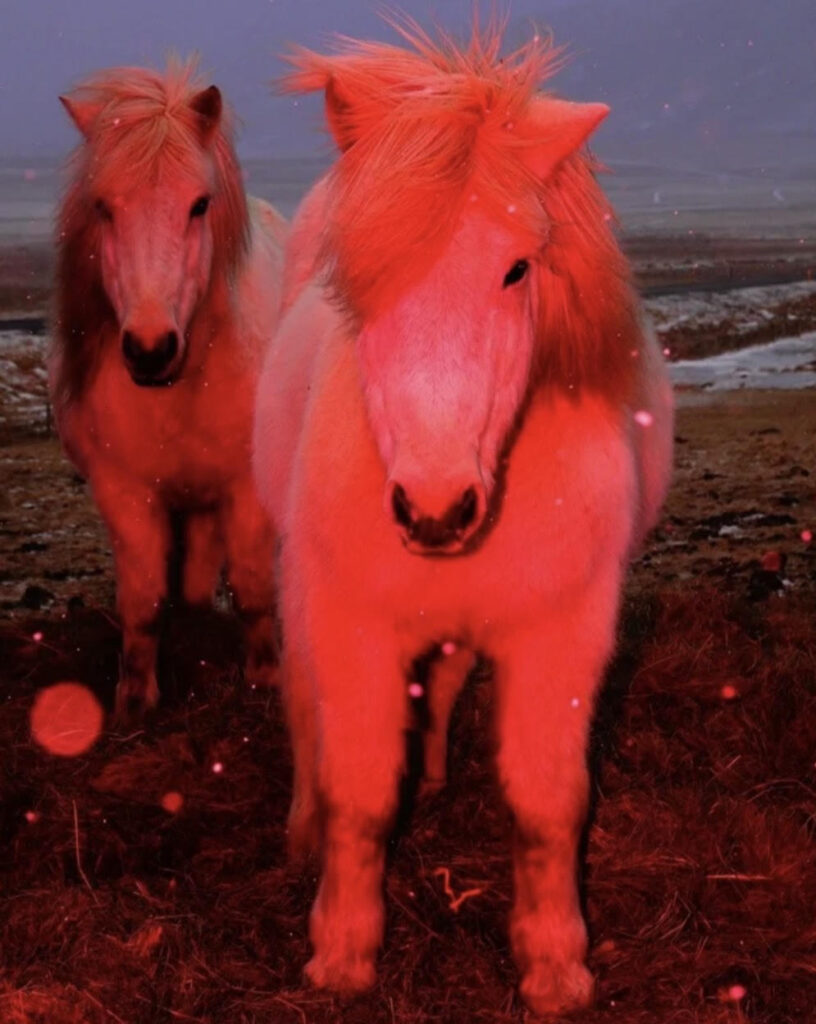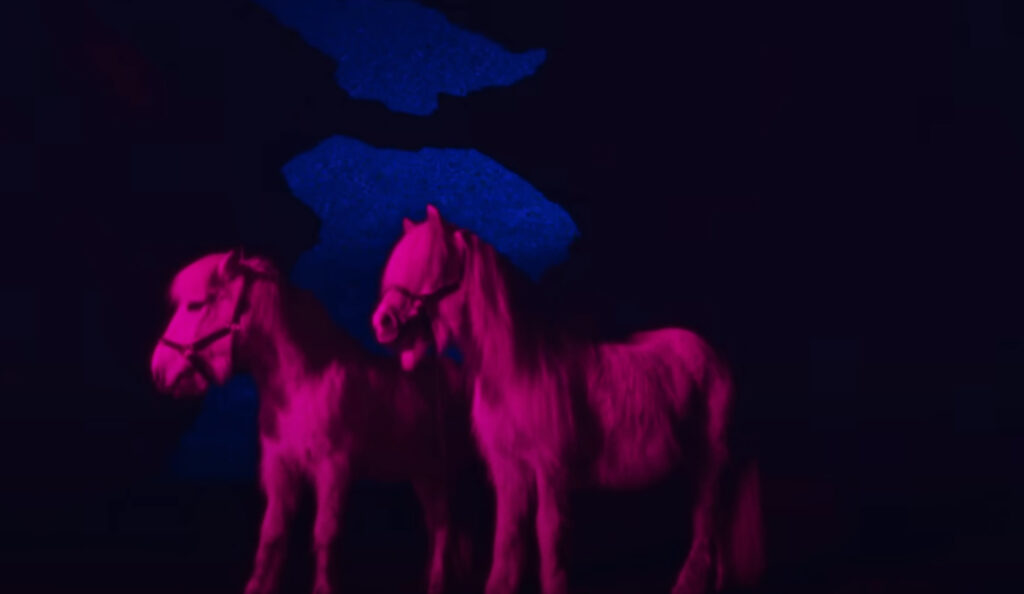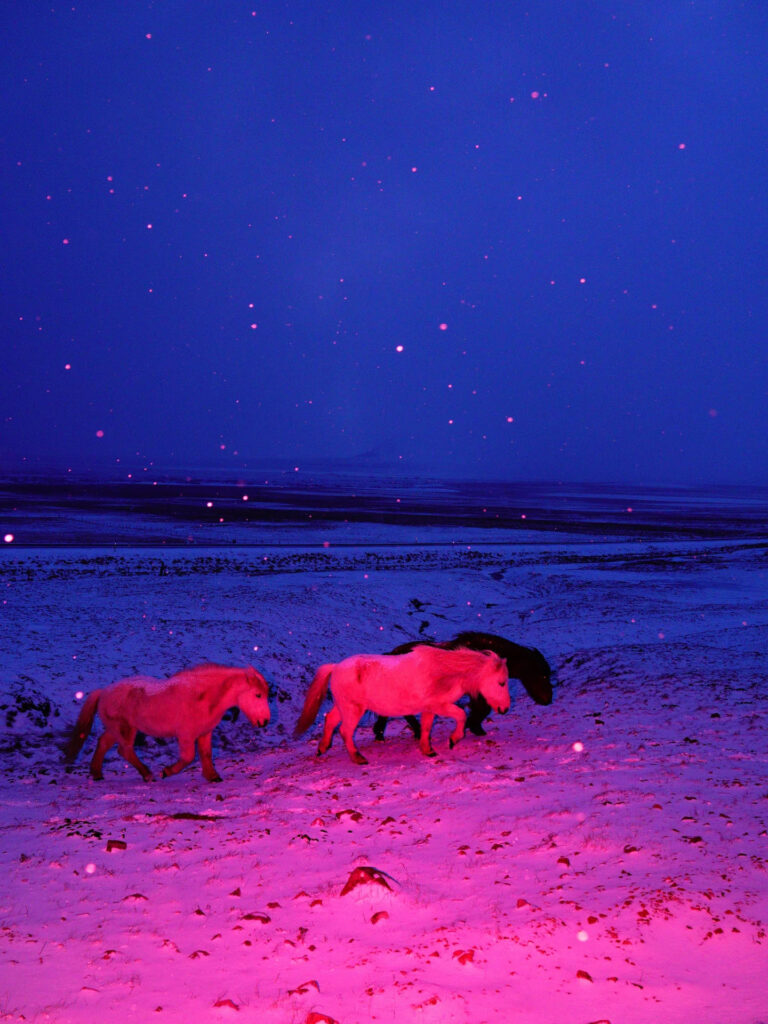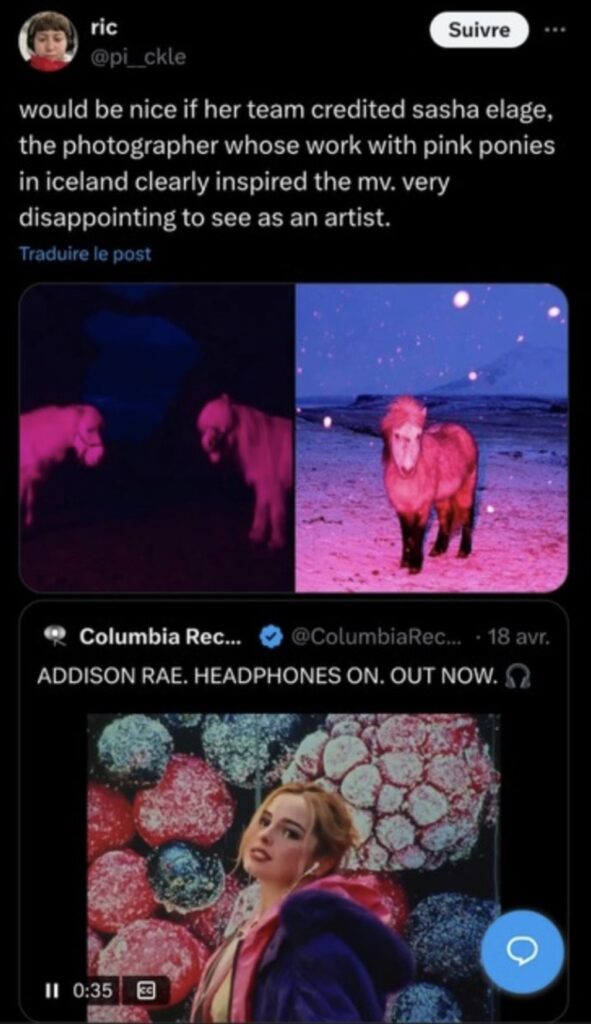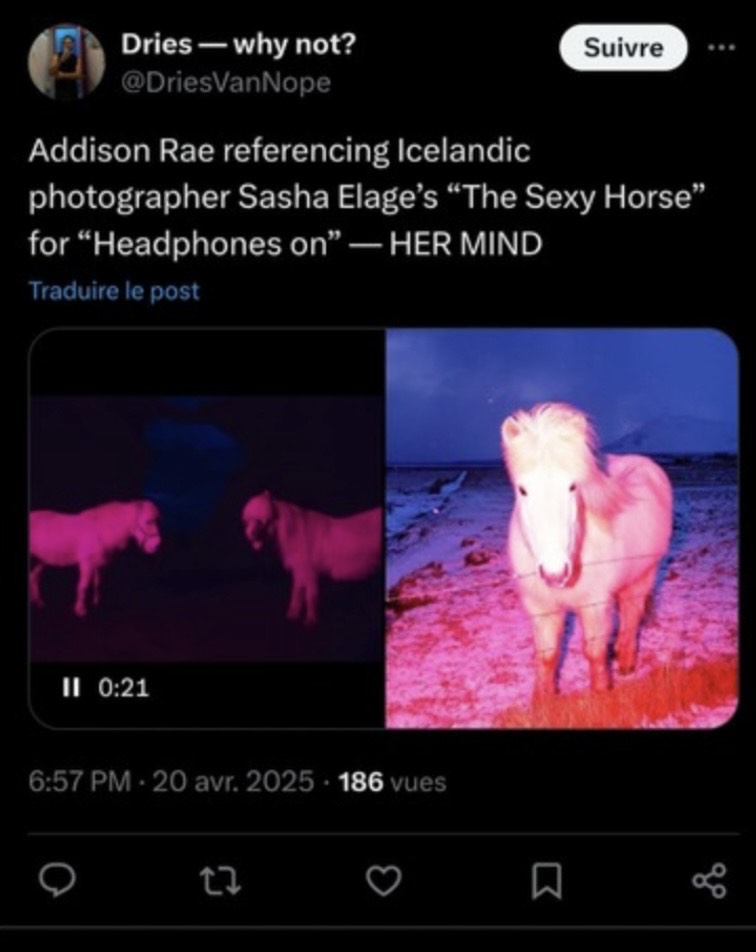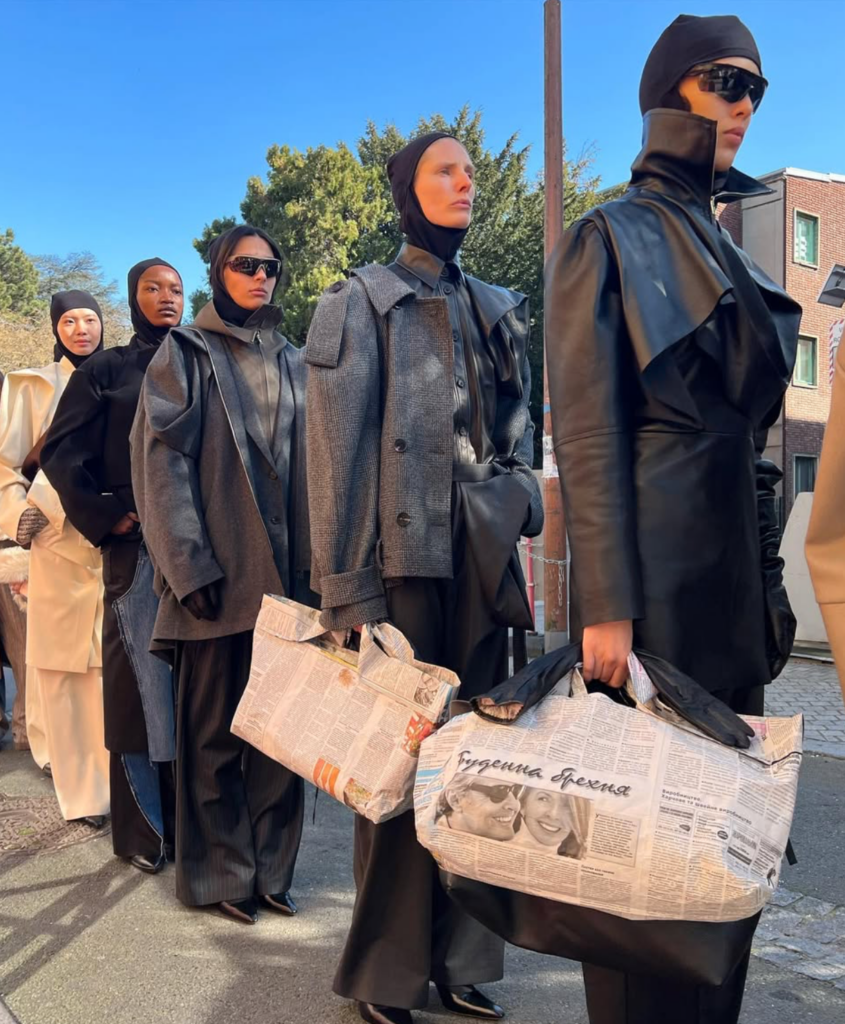
Lilia Litkovksa: "It's Not Just About Fashion, It's About Life and Resilience"
Paris Fashion Week AW25
Written by Jude Jones
There is a knotted relationship between destruction and creation. Maybe it’s in the polarity of the two, the essential, antagonistic opposition of the one to the other. Yet, there is also an extent to which the former spiritually necessitates the latter, to which the human act of bearing witness to degradation, decay, and violence demands of the soul a counterweight, a search for beauty, meaning, and possibility through that primordial ritual which, possibly above all us, makes us human and in god’s own image, the ritual of Creation.
For the past three years, Ukrainian brand Litkovska has existed somewhere inside this tension. Founded fifteen years ago by Lilia Litkovska, the progeny of some four generations of garment makers on her mother’s side, the Kyiv-based womenswear brand has been aesthetically challenging since its fledgling years, with its earliest shows demonstrating a knack for unconventional shapes, unexpected styling elements, and an inchoate fetish for the structural. However, the Russian invasion of Ukraine – the nadir of over a decade of chauvinist aggression by the imperialist state – put a new spotlight, heavy and glaring, on creators and creatives from the country. Creators like Lilia, left with but one choice, that of Creation.
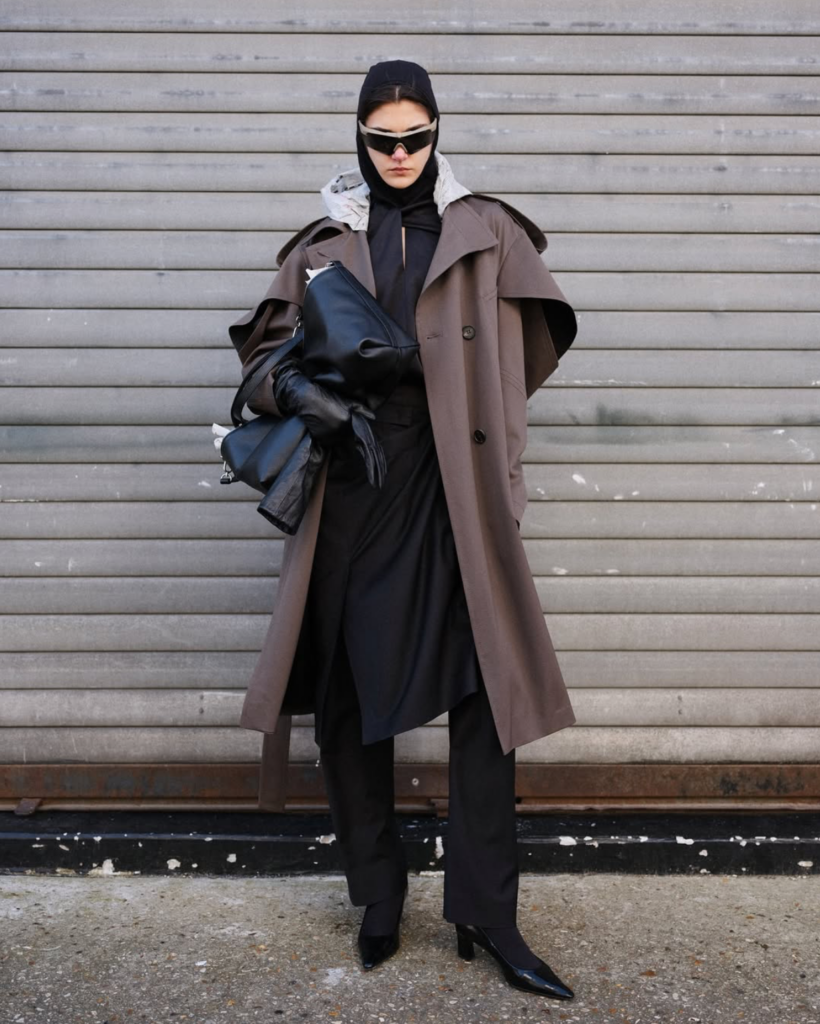
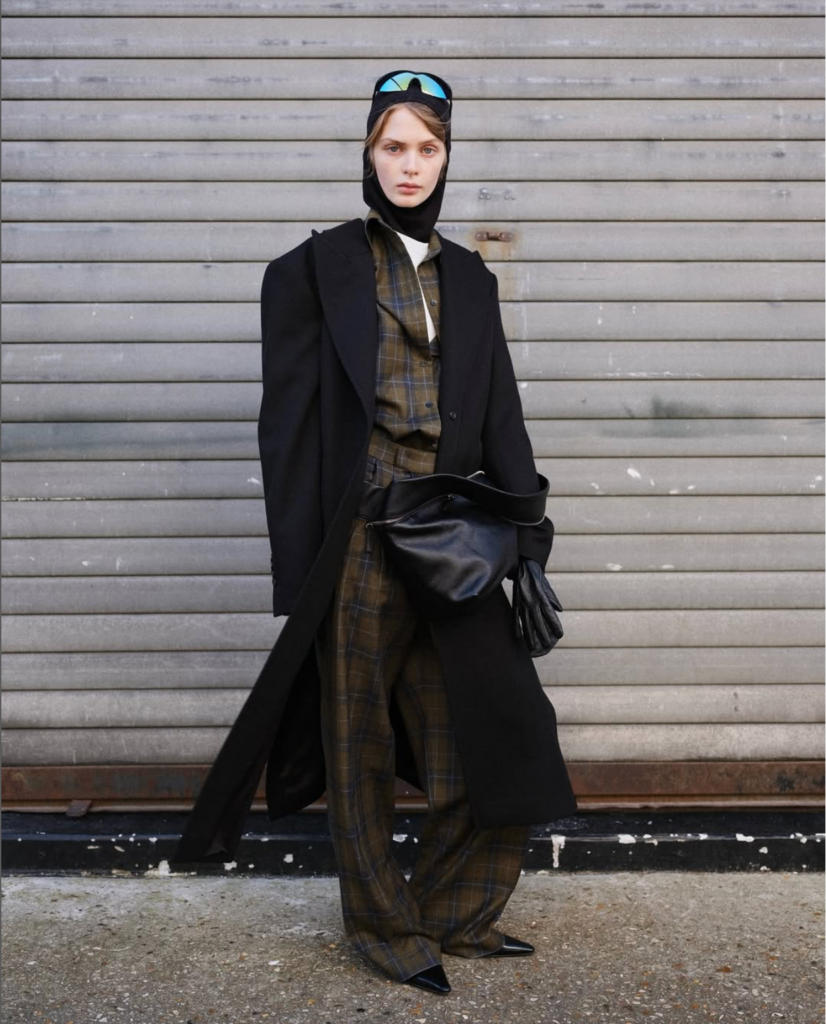
For Spring Summer 2025, Litkovksa thus presented Zhnyva in collaboration with legendary fashion photographer Nick Knight, named for the Ukrainian word for harvest. Assimilating national iconography and raising money for children impact by Russia’s war, the collection was both a hopeful commentary on renewal and rebirth while thinking too about the pestilent harvests of war, the runway’s entrance decorated with food rations, emergency candles, and rubble that Lilia had brought to Paris from her native Kyiv.
This season, Litkovska continued this dialogue. With a collection entitled “3.a.m – traverse”, a reference to the pilgrimage Lilia took up Kenya’s Mount Kilimanjaro with some of Ukraine’s injured soldiers, its design elements took on increasingly political overtures: reworked military motifs, a transgressive reimagination of menswear silhouettes, and the integration of newspapers into the garments as a commentary on the media’s role in global warcraft. It was the latter flourish that proved particularly prescient given that, about a week before the collection’s debut, the news-world was jaggedly splintered by U.S. President Donald Trump’s attacks on Ukrainian President Volodymyr Zelenskyy in the Oval Office, demanding the war-time leader’s gratitude and thanks. Fashion is a world that often seems hermetically isolated from those meta-narratives of history and politics, however Litkovska is a brand where the two are woven as one, where the will to create continually triumphs over and challenges the global realities of untruth, division, and destruction.
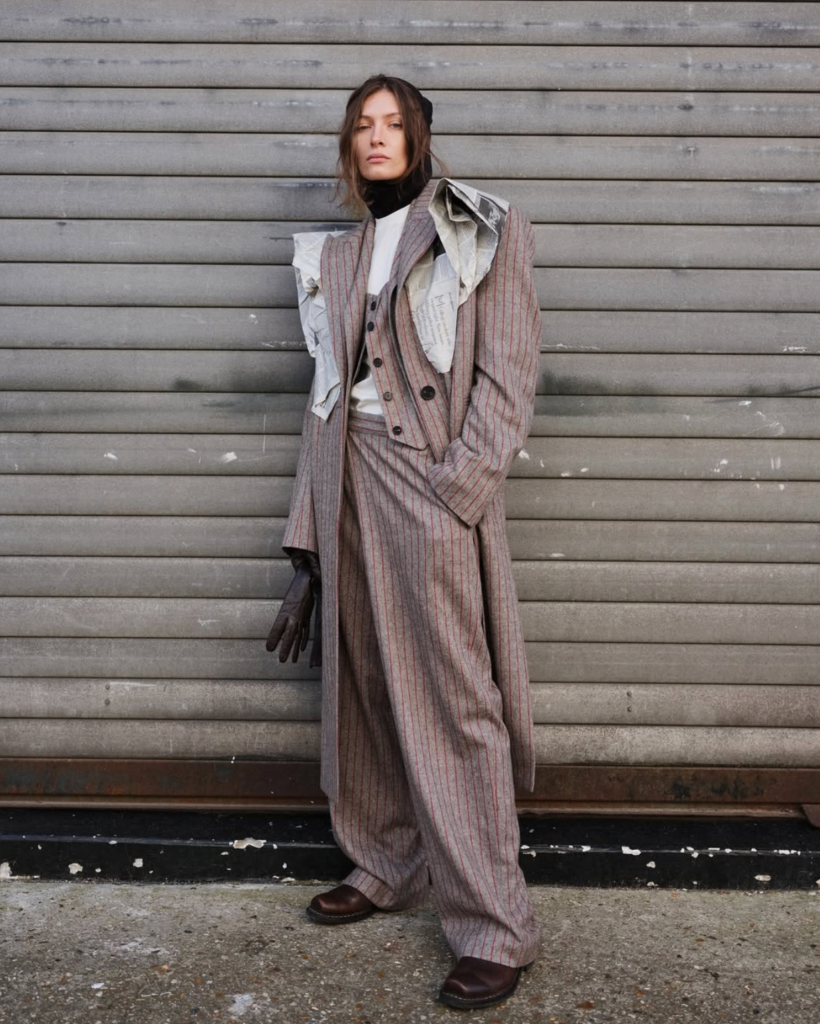
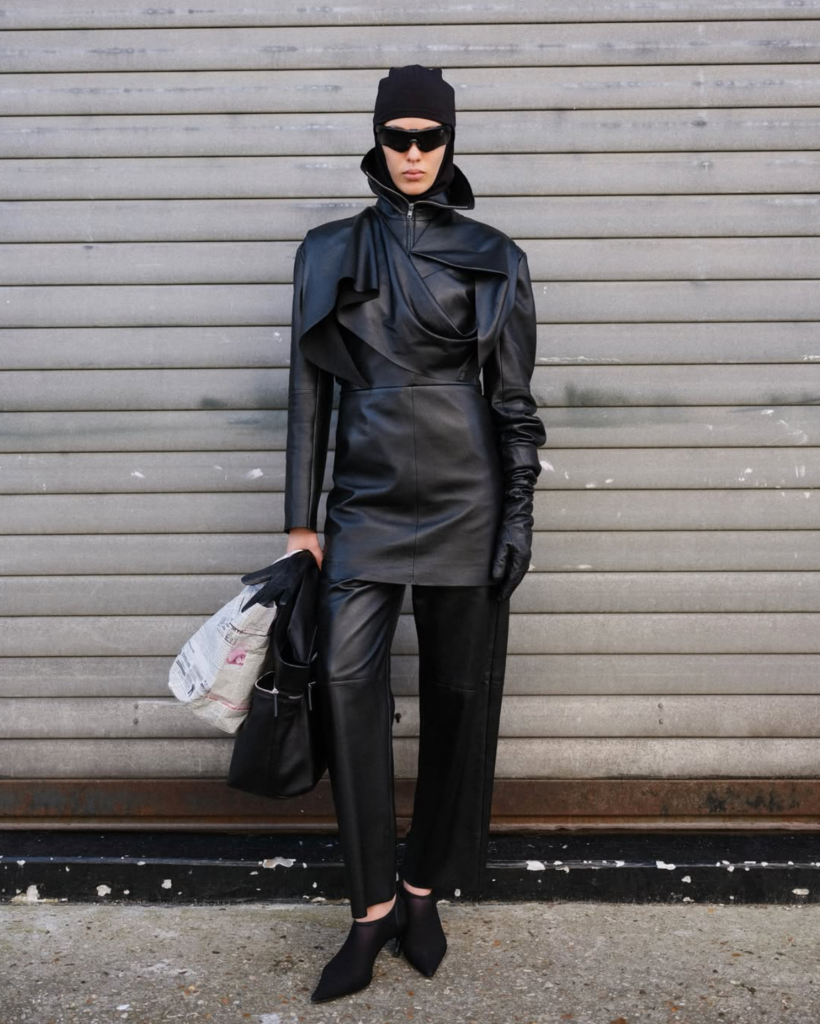
The Cold Magazine (CM): First of all, congratulations! Both on 15 years of Litkovska and on the latest collection, which felt truly personal. I was struck by how emotional the presentation was – in the best way, of course – so many people seemed to be responding on a very deep level to the clothing.
Lilia Litkovska (LL): Thank you so much for your kind words. It means a lot, especially at this stage in the journey. The emotional connection to the collection came naturally because it’s something very close to me — it’s not just about fashion, it’s about life and resilience, about overcoming struggles. The space we chose for the presentation, the idea of timelessness and the absence of trends, was meant to bring people into the conversation I am having with myself through this collection. It’s very rewarding to see that others are resonating with it on a deeper level.
CM: The collection’s title, “3.a.m – traverse”, is a reference both to your physical journey up Mount Kilimanjaro but also seems to be reflective of a sort of inner, spiritual journey that times of crisis, suffering, and uncertainty often require. I think that’s what makes this collection stand out so much at a time when so much of fashion and culture in general tries to work through referentiality and virality: you seem to be much more interested in working from a place within, in creating your own language.
LL: Yes, “3 a.m. – traverse” is indeed a reflection of my journey up Kilimanjaro. A crucial part of this journey was the people who climbed alongside me — Ukrainian soldiers who, after unimaginable loss, are embracing a new chapter of life with prosthetics instead of their limbs. Witnessing their resilience, their determination to keep moving forward despite everything, was profoundly moving. Each step they took was not just a physical effort but an act of defiance, of reclaiming their own future. This became the heartbeat of the collection.
I wanted to make something that stands outside of trends, something that speaks of endurance and resilience from a personal and collective perspective. Fashion, to me, is a way of telling a deeper story, of crafting a narrative that is true to oneself, rather than following what is popular. “3 a.m. – traverse” is about transformation—about the passage through struggle into renewal, about the eternal cycle where every ending carries the promise of a new beginning.
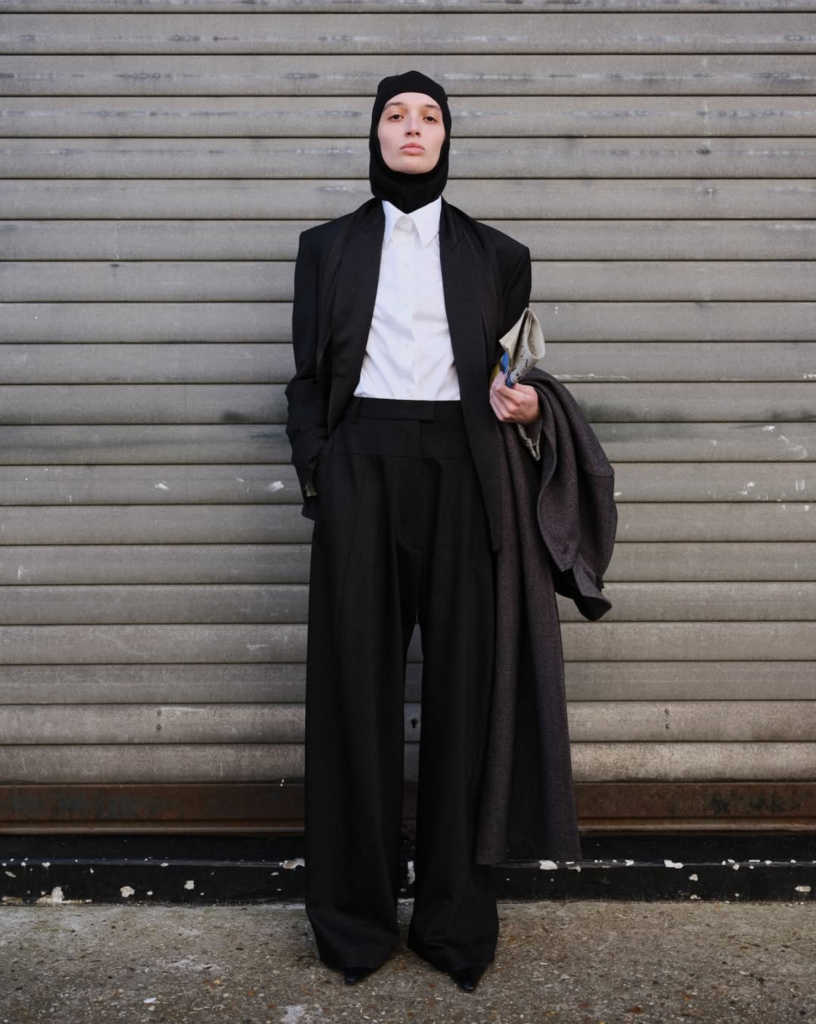
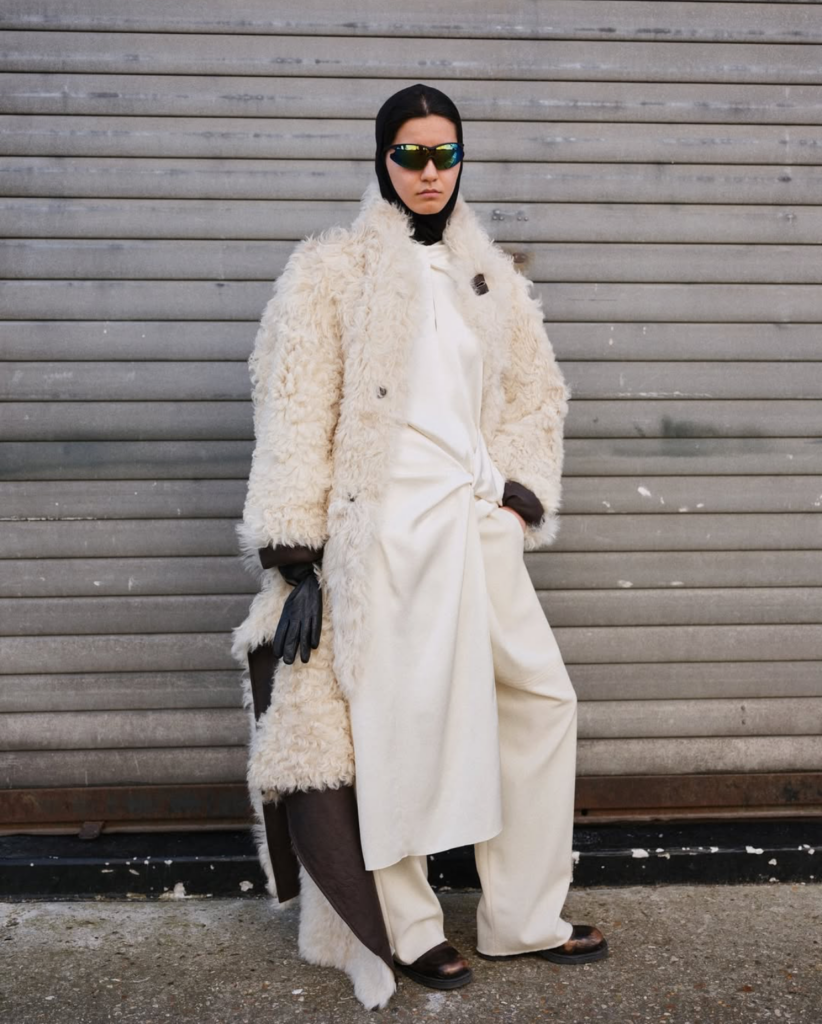
CM: That being said, what would you say are some of your many inspirations or references, both for this collection and in your life in general?
LL: The Paul Bert Serpette flea market, the space we chose for the presentation, was a major influence — a place that has been inspiring me for 15 years, where the past and future converge. This legendary marché aux puces draws seekers looking to unearth garments and objects that remain timeless for decades. I had long dreamed of holding my show here, and this season, I crossed that threshold despite its far-reaching location. Away from the usual fashion venues, we presented the collection with no crowds, no audience. The concept was to step back from the pressure of trends and public expectations. Here, fashion is judged only by time.
I dream that, decades from now, someone will find my pieces here — proof that they have endured.
CM: Something that really stood out to me about “3.a.m – traverse” were the silhouettes and the ways fabrics are folded and occupy space in bold, unexpected ways. Looking at everything, I was taken by an array of possible meanings for this: I felt like it gave the garments this protective, almost armour-like quality, but also made them seem quite vulnerable in a way. What stories were you trying to tell through the shapes and forms that clothing takes in this collection?
LL: In [the collection], our signature approach takes on new depth. Beyond our voluminous silhouettes, architectural cuts, and the deconstruction of traditional menswear into a new feminine form, this collection also integrates contemporary craftsmanship with elements inspired by climbing and military equipment—an acknowledgment of the times we’re living in.
Layers shift like echoes of movement, and tailoring becomes fluid, creating a dialogue between presence and transcendence. The garments are meant to evolve with the wearer, reflecting resilience, transformation, and the ever-changing nature of life itself.
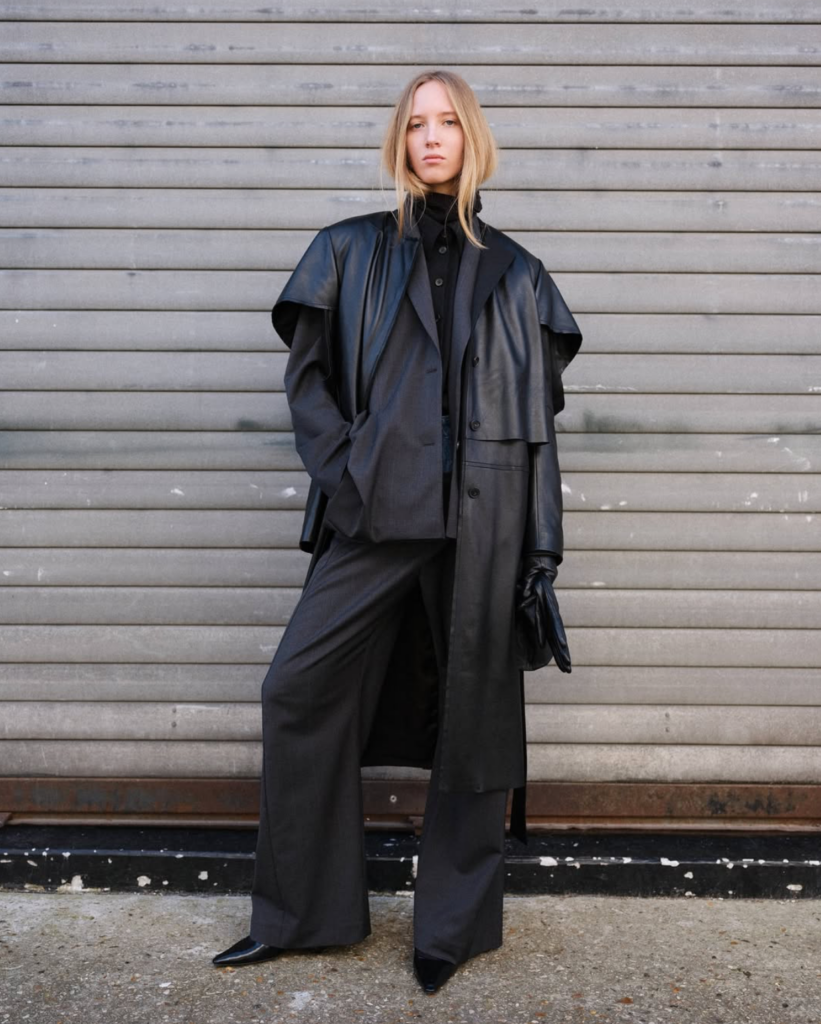

CM: Another central motif of the collection was the newspaper, which at times became a part of the literal fabric of your designs. Tell us how this came about.
LL: Today, the world is awash with information—an endless tide of headlines, trends, and fleeting novelties. Yet, amid this relentless stream, it is vital to hold on to what truly matters — the values that ground you, the beliefs that shape you. Over three years of full-scale war, I gathered these newspapers — pages heavy with the weight of Ukraine’s story. Stories of pain. Stories of resilience. Stories that echo what I hold dear. These fragments of truth and memory found their way into our styling and adorned the gallery, weaving the personal with the political, the ephemeral with the enduring.
CM: And lastly, I think people can often think of fashion as quite insular or self-absorbed, inherently apolitical. Your work, especially as a Ukrainian designer, defiantly challenges this presupposition. Why is creativity so important in times of crisis? And what message would you send to people who see fashion as devoid of politics?
LL: Fashion has always been a powerful language — one that speaks of resistance, identity, and values. Yet, modern fashion too often falls silent and loses this reflection. The past three years of full-scale war have left an indelible mark on me—on my family, my country, and the way I see the world.
I do not long for war, but I cannot return to the life that once was. That is why I presented this collection without rules, without an audience—breaking free from the weight of trends and expectations. I created in silence, allowing meaning to surface on its own—raw, unfiltered, untouched by the noise of the outside world. Through my collections, I want to tell the story of what shapes me and the world around me. I want those who wear my designs to carry something deeper—a fragment of light, the spirit of resilience, and the quiet, unyielding strength that lives within us all.
